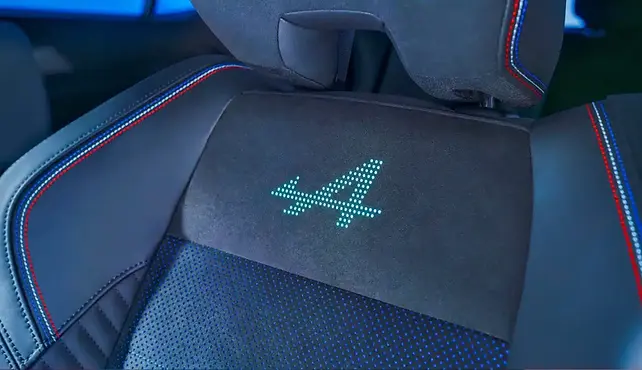
How I lead the entire design journey for all lineup
The goal
Create Renault's user experience with a unified design that seamlessly aligns interfaces with the brand identity, creating a cohesive and immersive journey across all touchpoints.

My role
Leading the entire design journey for Renault’s lineup—Scenic, Renault 5, 4ever, and Renault Esprit Alpine.
I collaborated with industrial designers, ergonomists, product leader, engineers, and subcontractors to ensure seamless functional integration, with prototypes and usability testing validating design decisions as part of the process.

Challenge : 4 Specific UI designs on one Playground
Representing diverse work areas across 4 models, each interface had to reflect its unique character and balance functional elements on a unified platform. By combining all elements of the 4 models’ interfaces into one layout, we created the Transversal Design Solution






Versatility in Design
Each design adapts to various screen sizes (2 clusters and 5 multimedia screens) and models. By ensuring all elements followed a responsive design approach, we developed a cohesive Design System

2 variations
5 variations


12 inch

10 inch
Design Approach
Streamlining to Essentials for Intuitive Design
UX point 1
-
We simplified the cluster interface by removing unnecessary elements and focusing on core driving information, enhancing clarity and intuitive feedback on speed and speed limits.


Renault Rafale
Optimized Display Structure
UX point 2
-
To ensure seamless adaptability across different display sizes and models, we structured all functions into 5 zones, creating a cohesive and versatile cluster design.
-
Occultation
-
Telltales zone
-
Speed zone: Gear, Speed digit, Speedline, driving mode.
-
View zone : Main features (Powermeter, Adas, Map)
-
Widget zone : Widgets & notice.
-
Gauge zone: Fuel levels, powertrains to cover all ranges



Extending the Polymorphic Brand Experience
UI point
-
We embraced Renault's "Polymorphic" philosophy to create a cohesive visual language. The 28-degree line from Renault's logo serves as the foundation, shaping modern graphics, rich textures, emotional surfaces, and dynamic motion. This approach unifies the four unique designs of each model into a single family while reinforcing and expanding the brand identity.










Prototyping
Interaction Mockup
Design Refinement
-
By presenting all designs through prototyping in interior mockups during weekly convergence meetings, we effectively balanced removing low-priority elements while ensuring key driving information—like Speedline and Powermeter—remained instantly visible.
This approach was crucial in saving work time, allowing us to make quick decisions and implement real-time updates for seamless validation
In-car Test
Design Validation
-
we conducted in-car tests, focusing on visibility and driver comfort, especially at night. We were the first in the industry to experiment with large color blocks combined with black or colored speed digits. Our goal was to ensure the design was clear and unobtrusive while driving.
All color variations were tested in a real car with the target display, activating all elements to assess their effectiveness in real driving conditions.
The Result
50% reduction in development time
Delivered 6 design packages in just 1.5 years, cutting development time by 50% compared to the typical 3-year timeline for a single product—setting a new standard for automotive design efficiency.
Award-Winning : Car of the Year
Scénic E-Tech electric - Car of the Year 2024
Renault 5 E-Tech electric - Car of the Year 2025
Beyond the accolades, this dual recognition highlights the excellence of our design.
The Renault 5 E-Tech Electric boldly and modernly reinterprets an iconic model from our heritage, while the Renault Scénic reshapes the driving experience with its innovative, user-centric design approach that blends functionality with modern technology.



















